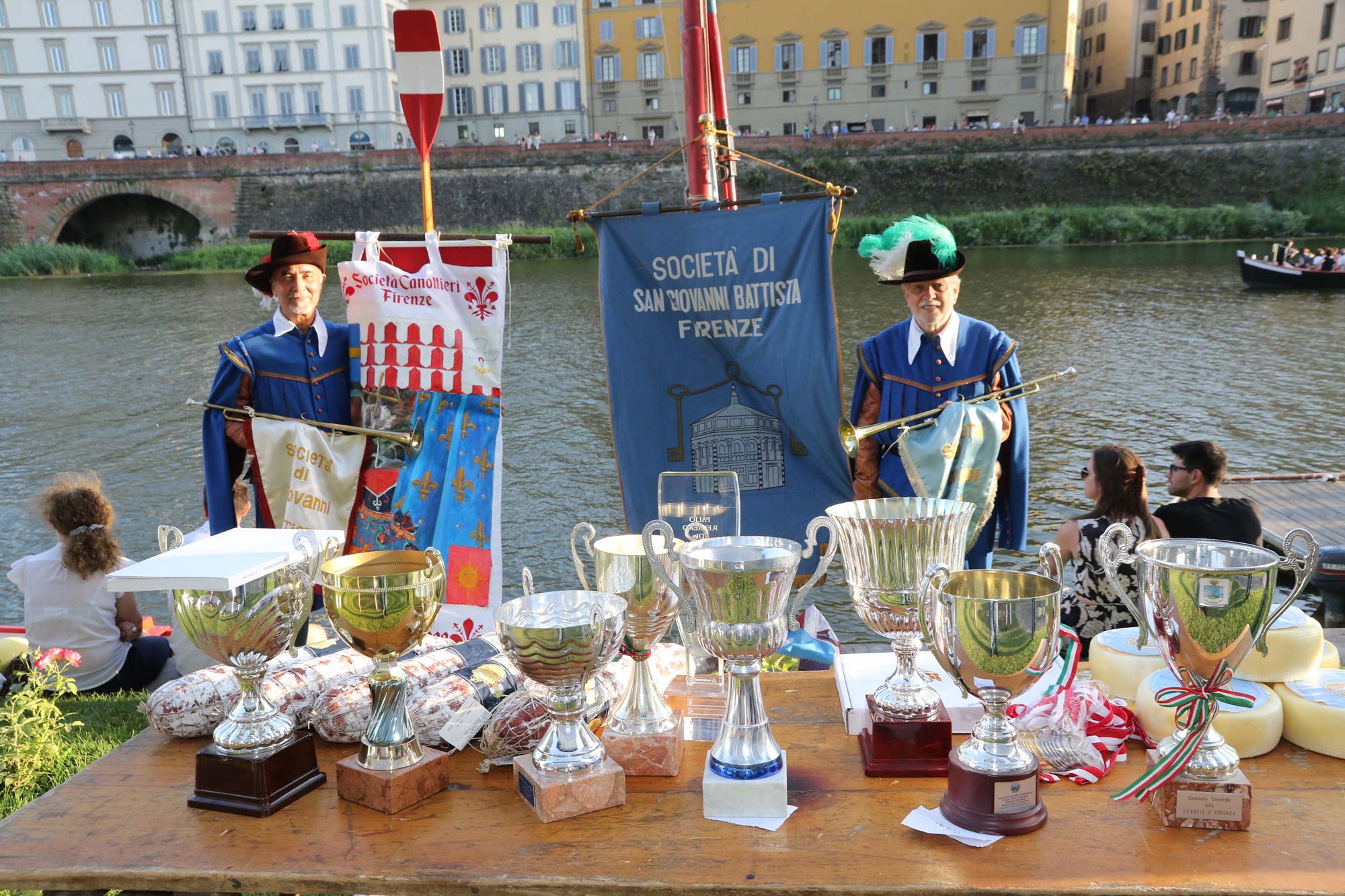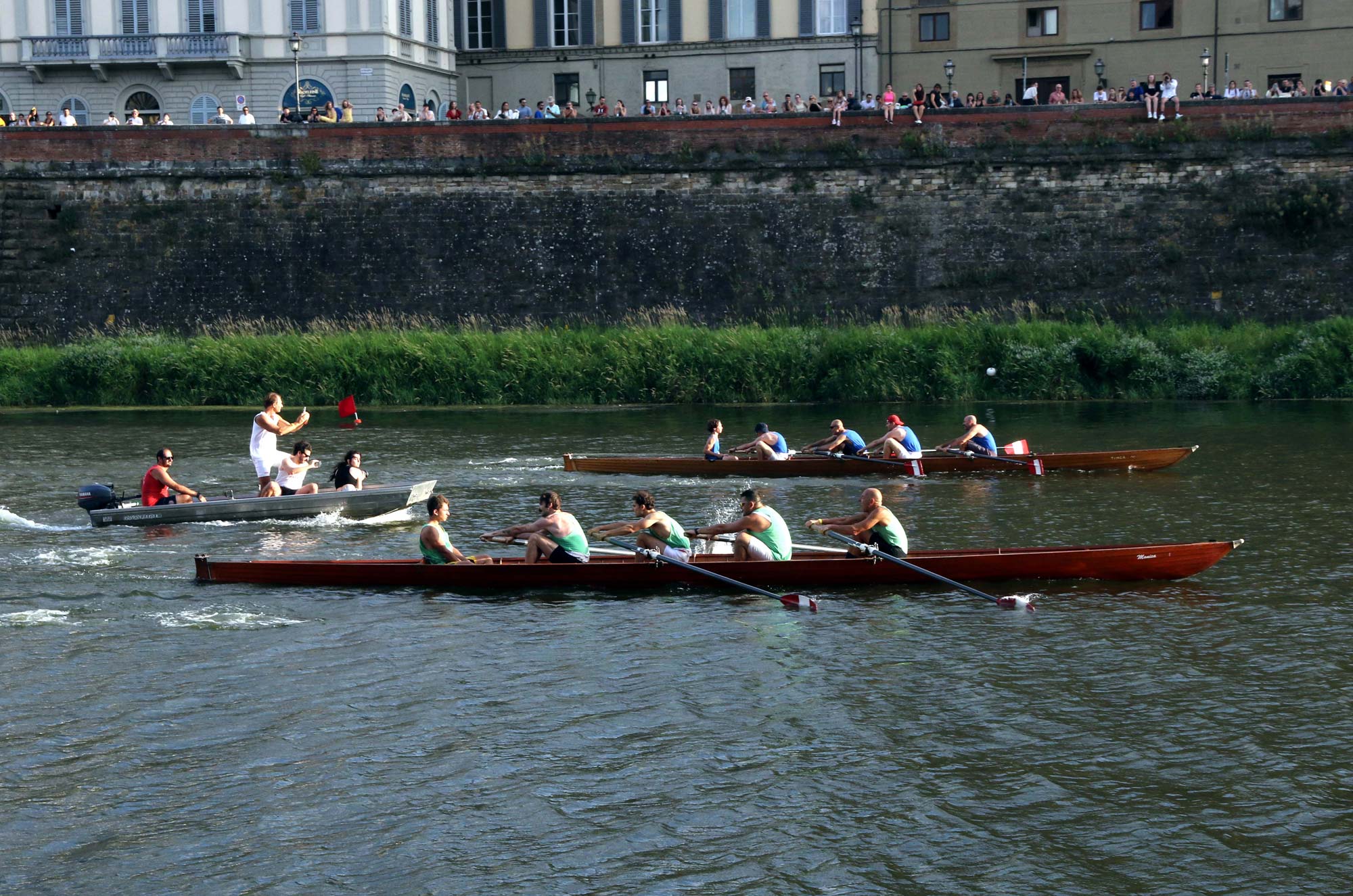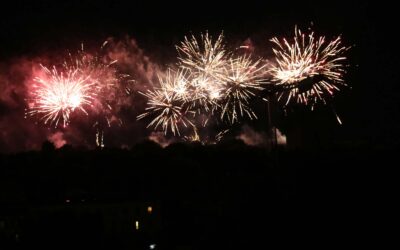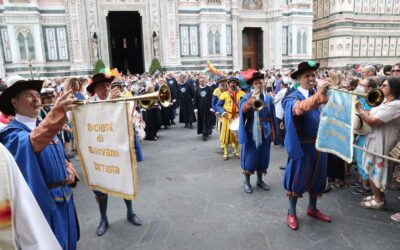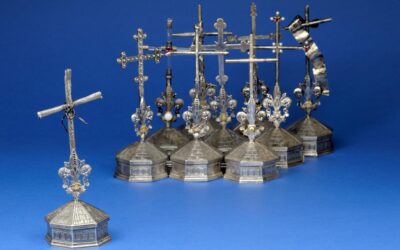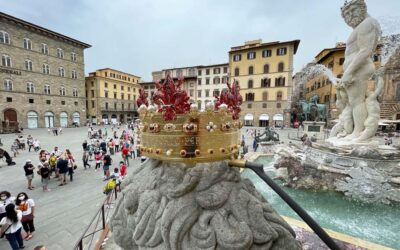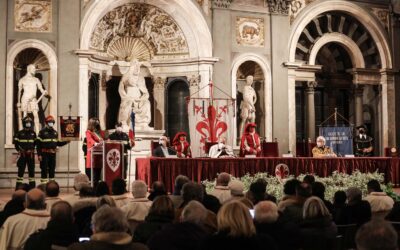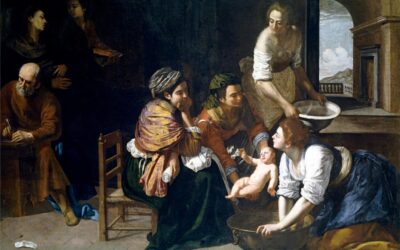In the Florence of Dante Alighieri, in Grand Ducal Florence, in Florence Capital of Italy and in the still provincial Florence of the early twentieth century, how was the feast of the Patron Saint lived and felt?
Rereading the old documents in the archive of the Society of St. John the Baptist, looking for distant news of the celebrations for the anniversary of the patron saint, in that month of bright June, we realize today how the solemnity, the joy of that feast so dear to the Florentines was remembered with other traditional manifestations of popular folklore, such as the Palio dei Berberi, the Palio dei Cocchi and that of the “navicelli” in the Arno.
From 1250 to 1740 in Florence, on July 25, the Palio dei “navicelli” or “barchetti” was held in honor of Sant’Jacopo. On that evening, since 1250, Florentine boatmen and renaioli disputed by vigorous blows of the rod the typical “regatta” town, on the stretch of water between Ponte Vecchio and the weir of Santa Rosa. The prize consisted of a valuable “cloth” and a cash prize, offered by the Signoria.
Times have changed, today the daily use of the city, with the circulation of vehicles, makes it difficult for the Berber race and the Palio dei Cocchi.
But the Arno is the same as always, sometimes reviled for its torrential course and floods, but still loved by the Florentines.
The “navicelli” were long and thin boats, black hulls, red holds, which until the nineteenth century transported goods of all kinds, driven not by oars but by poles, in more recent times the last “navicelli” that sailed the green waters of the Arno were those of the renaioli.
Today for obvious reasons, it is no longer the ancient “navicelli” to run the Palio rowing of San Giovanni, but the agile jole to four of the Società Canottieri Firenze that revive the ancient race on the water: the Greens, the Blues, the Reds and the Whites engage in a less spectacular competition of the Game of Football, but offering the public a choreographically unique show in the incomparable natural scenery that goes from the Ponte Santa Trinita, Ponte Vecchio, at the Uffizi (headquarters of the Società Canottieri Firenze).
